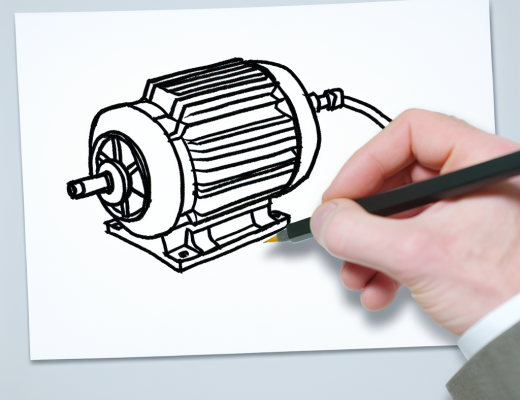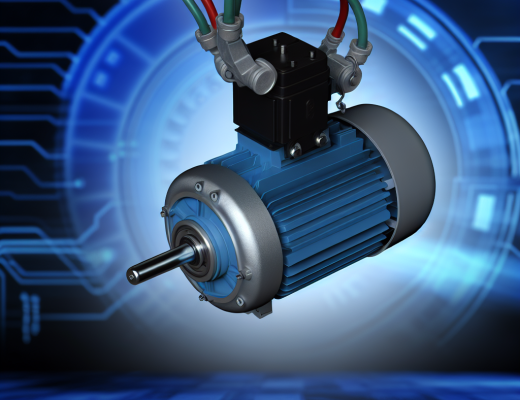There’s a growing interest in solar energy and how it can transform your energy consumption. One of the key components in maximizing the benefits of solar panels is the integration of batteries for energy storage. In this guide, you will learn how these batteries work, the different types available, and how they can enhance your solar system’s efficiency and reliability. Understanding solar energy storage will help you make informed decisions to optimize your renewable energy setup and potentially save you money in the long run.
Understanding Solar Energy Storage
As you probe into solar energy storage, it’s necessary to grasp that these systems allow you to store excess energy generated by your solar panels for later use, maximizing efficiency and reducing reliance on the grid. This stored energy can be utilized during times of low sunlight or at night, enhancing your energy independence.
The Role of Batteries in Solar Systems
Before you invest in a solar energy system, it’s important to understand the role of batteries. They act as a reservoir for excess electricity generated by your solar panels, enabling you to use stored energy when production doesn’t meet demand. This ensures that your energy needs are met continuously, regardless of weather conditions.
Types of Batteries Used in Solar Applications
By exploring the types of batteries available, you can better understand what suits your solar energy system. The main categories include:
- Lead Acid Batteries
- Lithium-ion Batteries
- Nickel Cadmium Batteries
- Saltwater Batteries
- Flow Batteries
After you evaluate these options, it’s vital to choose a battery that aligns with your specific energy requirements and budget.
| Battery Type | Key Feature |
| Lead Acid | Affordable but heavy, with a shorter lifespan. |
| Lithium-ion | Lightweight, efficient, and longer-lasting. |
| Nickel Cadmium | Durable; can handle extreme temperatures. |
| Saltwater | Environmentally friendly with a robust design. |
| Flow | Scalable energy storage suitable for larger systems. |
Storage options vary greatly, and understanding these can help optimize your solar system’s performance. Focus on the trade-offs between cost, capacity, lifespan, and efficiency while selecting battery types that fit your needs.
- Consider capacity and discharge rates.
- Evaluate the installation space available.
- Think about maintenance requirements.
- Seek warranties and support from manufacturers.
- Assess environmental impact and sustainability.
After thorough consideration, you can make an informed decision that enhances the efficiency and sustainability of your solar energy system.
Battery Chemistry and Performance
Some common battery chemistries affect the overall performance and efficiency of your solar energy storage system. Understanding these variations can help you choose the best solution for your energy needs. Lithium-ion batteries, for example, generally provide higher energy density and longer lifespans compared to traditional lead-acid batteries, making them a popular choice for solar systems.
Lithium-Ion vs. Lead-Acid
Above all, lithium-ion batteries are known for their efficiency, faster charging times, and lighter weight compared to lead-acid options. This translates to better overall performance in residential setups, allowing you to maximize your solar energy usage. While lead-acid batteries are more affordable initially, their shorter lifespan and maintenance requirements may not make them the best long-term investment for your solar system.
New Technologies in Solar Batteries
About emerging technologies in solar batteries continue to change the landscape of energy storage, making options more efficient and sustainable. Solid-state batteries, for example, promise increased safety and higher energy densities, offering even better performance for your solar systems. Additionally, flow batteries are gaining attention for their scalability and long cycle life, allowing you to store vast amounts of energy for prolonged periods.
In addition to solid-state and flow batteries, you may also encounter lithium-silicon and sodium-ion technologies, which aim to improve energy capacity and reduce costs. These advancements work towards extending battery life and enhancing performance in various environmental conditions. As these technologies mature, you could see more user-friendly solutions that cater specifically to the demands of solar energy storage, empowering you to make informed decisions on your energy journey.
System Sizing and Battery Capacity
There’s no one-size-fits-all approach when it comes to sizing your solar system and determining battery capacity. Each household has unique energy consumption patterns and requirements, which influence the type and size of the solar battery you need. By carefully analyzing your individual energy needs, you can optimize your system for maximum efficiency and performance.
Determining Your Energy Needs
Before you start sizing your solar battery, take the time to examine your energy consumption habits. Record your monthly electric bills and identify peak usage times, which will help you understand the amount of energy you typically use. This data will guide you in making informed decisions about how much storage capacity you require.
Battery Sizing Calculations
Along with understanding your energy consumption, you must also perform battery sizing calculations to determine the optimal battery capacity for your solar system. This involves estimating the total watt-hours you need during times when sunlight is unavailable.
It’s imperative to calculate your daily energy usage in watt-hours and then consider how many days of autonomy you desire for your solar battery. This calculation will provide you with a targeted battery capacity, ensuring you have ample power stored for evenings or cloudy days. Additionally, account for battery efficiency, as this will slightly reduce the amount of energy available for your use, allowing you to select batteries that meet your specific energy needs effectively.
Installation and Maintenance
Your solar energy storage system’s performance heavily relies on proper installation and ongoing maintenance. Ensuring that your batteries are appropriately set up and routinely checked can significantly extend their lifespan and enhance efficiency. Adequate ventilation, correct wiring, and appropriate battery placement all contribute to optimal operation. Moreover, familiarizing yourself with the system’s characteristics will help you detect potential issues before they escalate.
Proper Installation Practices
Any mistakes during installation can lead to inefficiencies or even hazards. It’s vital to follow manufacturer guidelines closely and consider enlisting a professional installer familiar with solar energy systems. Proper placement, secure connections, and adequate ventilation are crucial components that ensure your battery system functions effectively and safely.
Routine Maintenance for Longevity
An effective maintenance schedule can significantly prolong your batteries’ life and ensure they continue to provide reliable power. Regularly inspect connections, monitor the charge cycle, and clean battery terminals to prevent corrosion. Keeping your system in optimal condition not only enhances performance but can also save you money in the long run by avoiding premature replacements.
In addition to these checks, consider conducting deeper assessments of your battery system periodically. This may include testing the voltage levels, cycling the batteries to ensure they are holding charge, and reviewing the overall system health. By staying proactive in your maintenance efforts, you can optimize performance and avoid unexpected issues, ultimately leading to a more sustainable and economically viable solar energy solution.
Cost Considerations
Despite the initial expenses associated with installing solar battery systems, the long-term benefits often outweigh these costs. You may find that energy independence and savings on electricity bills can lead to a favorable return on investment. Additionally, as technology advances, the price of batteries continues to decrease, making solar energy storage an increasingly viable option for homeowners.
Initial Investment vs. Long-Term Savings
Across various regions, the initial investment in solar battery systems can seem daunting. However, many homeowners experience significant long-term savings through reduced energy bills and increased property value, making this investment a financially sound decision over time.
Incentives and Rebates for Solar Battery Systems
Investment in solar battery systems can be made more affordable through various incentives and rebates offered by governments and organizations. These programs are designed to encourage renewable energy adoption and can significantly lower your initial costs.
This often includes federal tax credits, state-level incentives, and utility rebates that can collectively save you thousands of dollars on your solar battery installation. By taking advantage of these financial programs, you can enhance your return on investment while contributing to a more sustainable future. It’s imperative to research and understand what incentives are available in your area to maximize your savings on solar energy storage solutions.
Future Trends in Solar Battery Technology
Keep an eye on the dynamic advancements in solar battery technology, which promise to enhance energy storage solutions significantly. As the demand for renewable energy grows, innovations in efficiency, capacity, and affordability will shape the future of solar energy systems. Customers can expect lighter, longer-lasting batteries that integrate seamlessly with both home solar setups and the wider energy grid, enhancing sustainability and cost-effectiveness.
Innovations on the Horizon
Technology is evolving rapidly, with new battery chemistries such as solid-state and lithium-sulfur being developed. These innovations aim to improve safety and energy density while reducing reliance on costly materials. Furthermore, advancements in artificial intelligence will optimize energy management, allowing for real-time adjustments based on usage patterns and solar generation forecasts. As these technologies progress, you may find even more effective and sustainable options for your solar energy needs.
Impact of Electric Vehicles on Solar Storage
An increasing number of electric vehicles (EVs) are being integrated with solar storage systems, creating a synergistic relationship that could transform the energy landscape. You may find that your EV can serve as a mobile battery, allowing you to store excess solar energy generated during the day. This not only extends your energy supply but also facilitates greater self-consumption and reduced reliance on the grid. As both solar technology and EV adoption rise, you will likely benefit from added flexibility and efficiency in managing your energy resources.
Battery technology for electric vehicles is advancing rapidly, providing enhanced energy capacity and efficiency that complements solar power systems. With vehicle-to-grid (V2G) technology, you can utilize your EV as a storage solution, discharging energy back to your home or even selling it to the grid when necessary. This bi-directional flow not only supports your energy needs but can also generate income or credits through energy sales. As your EV becomes more than just a mode of transportation, it plays a vital role in optimizing your solar energy usage and overall energy independence.
Final Words
As a reminder, understanding batteries for solar systems can significantly enhance your energy management. By choosing the right storage solution, you can maximize the potential of your solar energy, ensuring you have reliable power when needed. This knowledge empowers you to store excess energy, reduce reliance on the grid, and ultimately save on energy costs. Your journey towards efficient solar energy use begins with making informed choices about your energy storage solutions.




